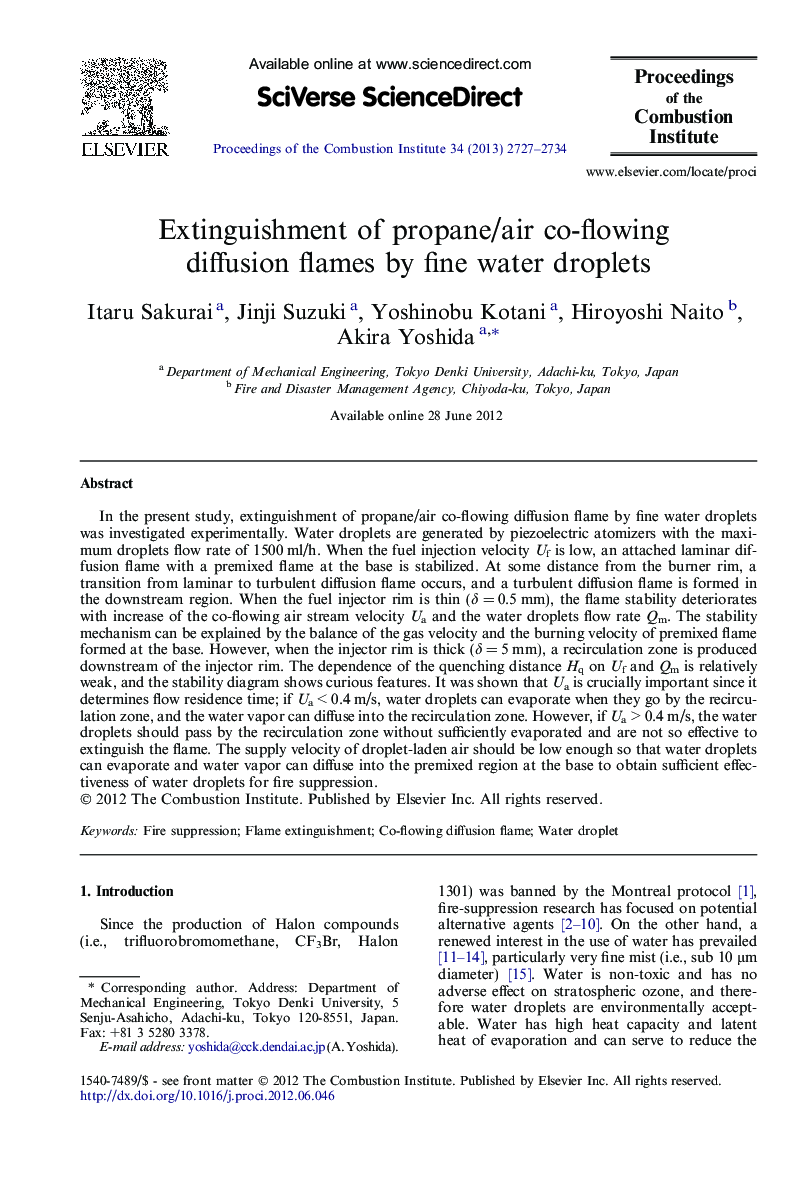| کد مقاله | کد نشریه | سال انتشار | مقاله انگلیسی | نسخه تمام متن |
|---|---|---|---|---|
| 240905 | 1427922 | 2013 | 8 صفحه PDF | دانلود رایگان |

In the present study, extinguishment of propane/air co-flowing diffusion flame by fine water droplets was investigated experimentally. Water droplets are generated by piezoelectric atomizers with the maximum droplets flow rate of 1500 ml/h. When the fuel injection velocity Uf is low, an attached laminar diffusion flame with a premixed flame at the base is stabilized. At some distance from the burner rim, a transition from laminar to turbulent diffusion flame occurs, and a turbulent diffusion flame is formed in the downstream region. When the fuel injector rim is thin (δ = 0.5 mm), the flame stability deteriorates with increase of the co-flowing air stream velocity Ua and the water droplets flow rate Qm. The stability mechanism can be explained by the balance of the gas velocity and the burning velocity of premixed flame formed at the base. However, when the injector rim is thick (δ = 5 mm), a recirculation zone is produced downstream of the injector rim. The dependence of the quenching distance Hq on Uf and Qm is relatively weak, and the stability diagram shows curious features. It was shown that Ua is crucially important since it determines flow residence time; if Ua < 0.4 m/s, water droplets can evaporate when they go by the recirculation zone, and the water vapor can diffuse into the recirculation zone. However, if Ua > 0.4 m/s, the water droplets should pass by the recirculation zone without sufficiently evaporated and are not so effective to extinguish the flame. The supply velocity of droplet-laden air should be low enough so that water droplets can evaporate and water vapor can diffuse into the premixed region at the base to obtain sufficient effectiveness of water droplets for fire suppression.
Journal: Proceedings of the Combustion Institute - Volume 34, Issue 2, 2013, Pages 2727–2734